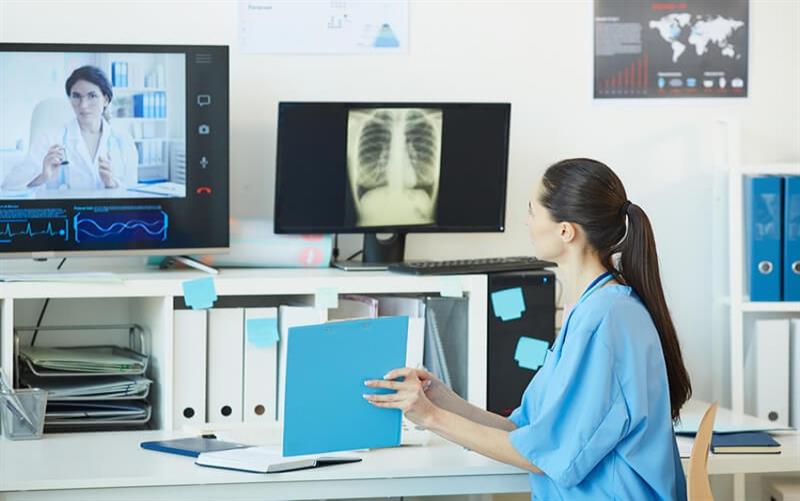
The revolution in healthcare delivery driven by software technology is transforming medicine. From enhancing patient care and streamlining operations to enabling remote consultations and predictive analytics, software is at the forefront of this change. Embracing these innovations is key to delivering high-quality, patient-centered care in the 21st century. The future of healthcare is not just about prescribing medicine but prescribing progress through cutting-edge technology.
The integration of software into healthcare delivery is revolutionizing the industry, offering unprecedented opportunities to enhance patient care, improve outcomes, and reduce costs. As technology continues to evolve, the potential for further advancements is immense. By embracing these innovations and addressing the associated challenges, we can pave the way for a more efficient, effective, and equitable healthcare system. The future of healthcare is digital, and the possibilities are endless.
In the modern era, healthcare is undergoing a profound transformation. The advent of advanced software technologies is revolutionizing healthcare delivery, enhancing patient outcomes, and streamlining operations. This blog explores the ways in which software is reshaping the healthcare landscape and the promising future it holds for medical practice.
The Rise of Digital Healthcare
The integration of digital tools in healthcare has ushered in a new age of efficiency and accessibility. Key technologies such as Electronic Health Records (EHRs), telemedicine, and mobile health applications are at the forefront of this revolution.
Electronic Health Records (EHRs)
EHRs have become a fundamental component of healthcare infrastructure. They offer a digital version of a patient’s paper chart, providing real-time, patient-centered records accessible instantly and securely to authorized users. The benefits of EHRs include:
1. Improved Patient Care:
By providing comprehensive patient histories, EHRs help healthcare providers make informed decisions, reducing the risk of medical errors.
2. Enhanced Coordination:
EHRs facilitate seamless communication among different healthcare providers, ensuring coordinated and consistent care.
3. Data Analytics:
EHRs enable healthcare organizations to analyze data for trends, outcomes, and efficiencies, leading to better population health management.
Telemedicine
Telemedicine has significantly expanded access to healthcare, particularly in remote and underserved areas. The COVID-19 pandemic accelerated its adoption, highlighting its benefits:
1. Convenience:
Patients can consult healthcare providers from the comfort of their homes, reducing the need for travel and wait times.
2. Accessibility:
Telemedicine bridges the gap for those in rural areas or with mobility issues, ensuring they receive timely medical advice and care.
3. Cost-Effectiveness:
By reducing the need for in-person visits, telemedicine lowers healthcare costs for both providers and patients.
Mobile Health Applications
Mobile health applications empower patients to take control of their health through their smartphones. These apps offer a range of functionalities, including:
1. Health Monitoring:
Apps that track vital signs, such as heart rate and blood sugar levels, help patients manage chronic conditions more effectively.
2. Medication Management:
Reminders and alerts ensure patients adhere to their medication schedules.
3. Fitness and Wellness:
Apps promote healthy lifestyles by tracking physical activity, diet, and sleep patterns.
Advanced Software Solutions Enhancing Patient Care
Beyond administrative efficiency, advanced software solutions are transforming patient care through innovations such as artificial intelligence (AI), machine learning (ML), and predictive analytics.
Artificial Intelligence and Machine Learning
AI and ML are driving significant advancements in healthcare:
1. Diagnostics:
AI-powered tools can analyze medical images to detect diseases like cancer with greater accuracy than human eyes alone.
2. Personalized Treatment:
ML algorithms can predict patient responses to treatments, allowing for personalized care plans that improve outcomes.
3. Predictive Analytics:
AI can identify patients at risk of conditions like heart disease or diabetes, enabling early interventions and preventive care.
Predictive Analytics
Predictive analytics uses historical data to forecast future health trends and outcomes, providing numerous benefits:
1. Disease Prevention:
By identifying at-risk populations, healthcare providers can implement preventive measures to reduce the incidence of chronic diseases.
2. Resource Optimization:
Predictive models can optimize the allocation of resources, such as staffing and medical supplies, improving efficiency and reducing costs.
3. Improved Patient Outcomes:
Anticipating patient needs and proactively addressing them leads to better overall health outcomes.
Addressing Challenges and Embracing the Future
While the advantages of software in healthcare are vast, several challenges must be addressed to fully realize its potential:
1. Data Privacy and Security:
Protecting sensitive patient information is crucial. Robust cybersecurity measures and compliance with regulations like the Health Insurance Portability and Accountability Act (HIPAA) are essential.
2. Integration and Training:
Implementing new technologies requires integrating them with existing systems and providing comprehensive training for healthcare staff.
3. Digital Divide:
Ensuring all patients have access to digital healthcare tools, regardless of socioeconomic status, is vital for equitable healthcare delivery.Despite these challenges, the future of healthcare is bright. The continued evolution of software solutions promises even more innovative and effective ways to deliver care. As technology advances, we can anticipate more personalized, efficient, and accessible healthcare.